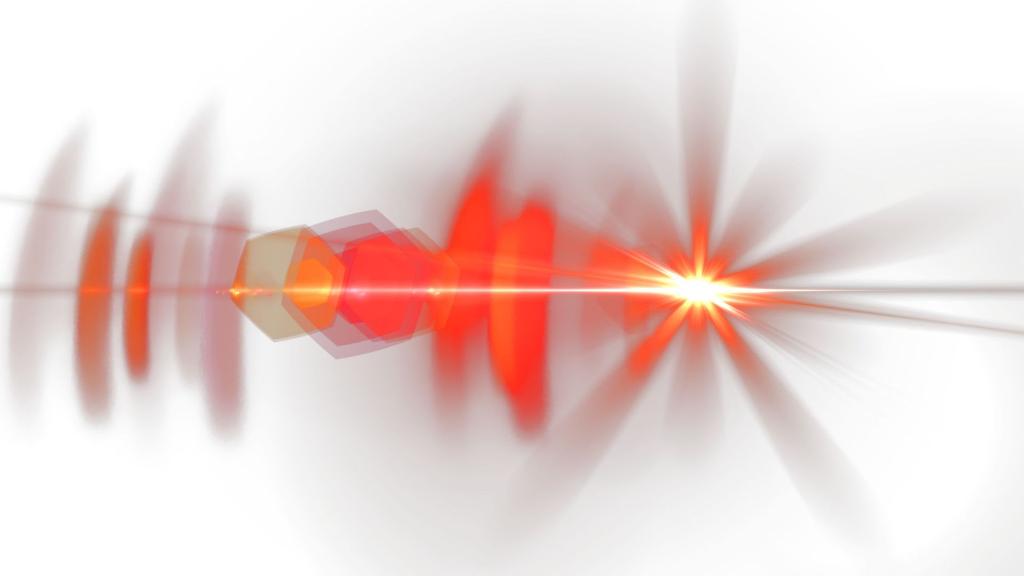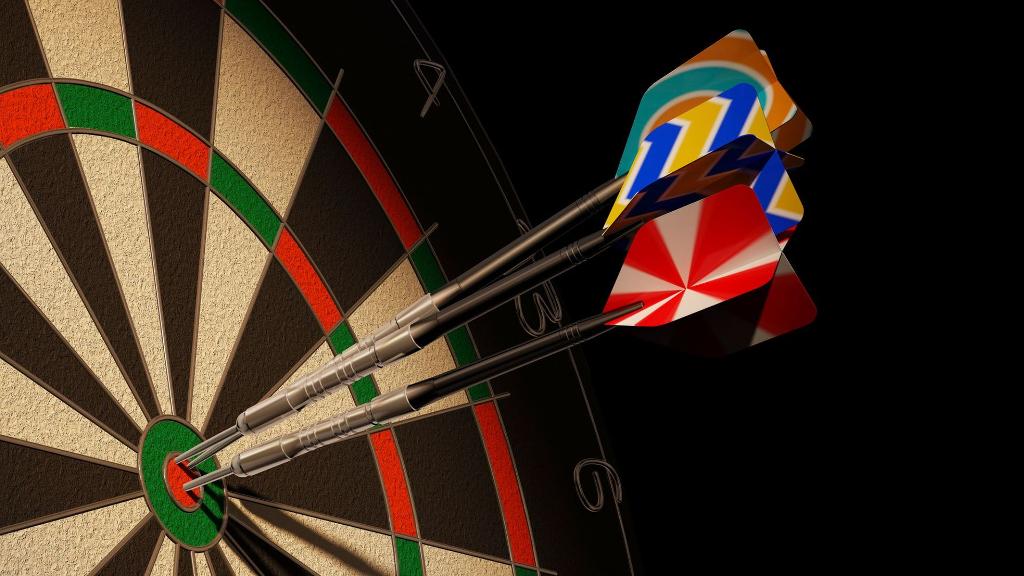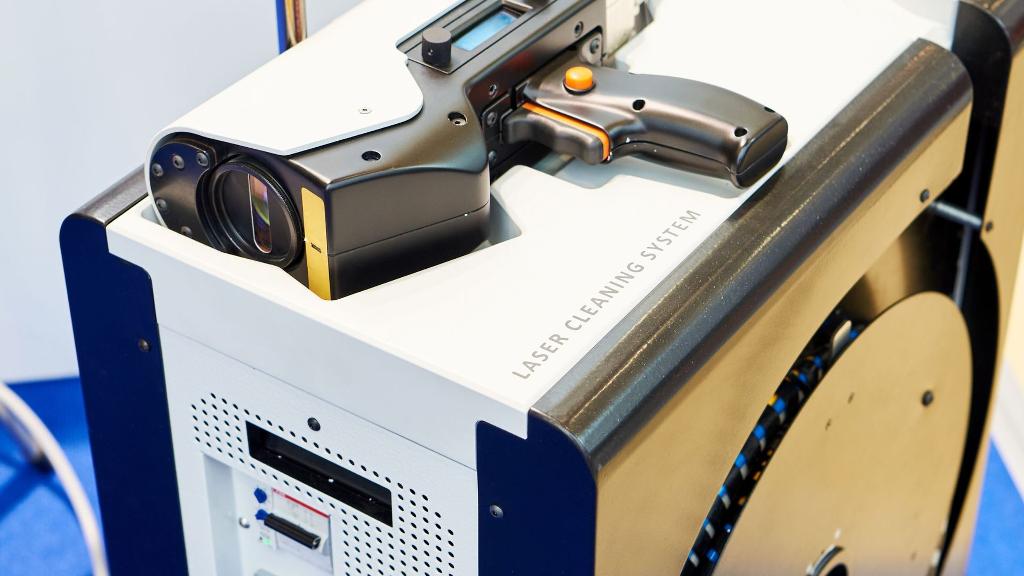In a world increasingly aware of its environmental footprint, the adoption of innovative cleaning methods is no longer an option but a necessity.
Amongst these, laser cleaning technology stands tall, promising a shift from traditional methods fraught with hazardous chemical waste and high operating costs.
This piece aims to delve deep into the laser cleaning process, its underlying principles, and the myriad benefits it brings to the table for various industries.
The Working Principle of Laser Cleaning

Laser cleaning is an advanced non-contact process that uses the focused light energy of lasers to remove contaminants like rust, paint, oil, or dirt from various surfaces. This technology operates based on a principle known as laser ablation.
Here, laser beams of specific wavelengths and power levels are directed at the targeted areas, causing the contaminants on the surface to absorb the laser energy and vaporize or disintegrate, leaving the base material unaffected.
This non-contact method is particularly suitable for sensitive substrates, delicate components, and complex geometries where traditional cleaning methods might cause damage.
What are the Advantages of Laser Cleaning?

Laser cleaning systems are revolutionizing the cleaning industry, offering significant advantages over traditional techniques like abrasive blasting, chemical cleaning, or dry ice blasting. These advantages range from environmental benefits to cost and energy efficiency, versatility, safety compliance, improved productivity, and much more.
Eco-Friendly Technology
Firstly, laser cleaning is an environmentally friendly alternative to traditional cleaning methods, which often involve harmful chemicals and produce additional waste. Key attributes of its eco-friendly nature include:
Reduction in chemical waste: Laser cleaning doesn't involve chemicals, resulting in less hazardous waste production.
Low environmental footprint: With no chemical or abrasive consumables, this method eliminates disposal problems associated with traditional methods, reducing the overall environmental impact.
Compliance with Environmental Protection Agency (EPA) regulations: As a clean technology, laser cleaning aligns with the EPA's guidelines for environmentally friendly practices.
Cost and Energy Efficiency
Laser cleaning also shines in the department of cost and energy efficiency, bringing multiple benefits:
High power output at a low cost: Laser machines are capable of delivering a high level of power while keeping operating costs low.
Efficient energy consumption: Unlike methods like sandblasting or chemical cleaning, laser cleaning uses energy more efficiently, contributing to cost savings.
Decreased maintenance costs: Due to the non-contact nature of the process, wear and tear on the equipment are minimal, resulting in lower maintenance costs.
Versatility and Adaptability
Another advantage of laser cleaning is in its applications, providing:
A wide range of industrial applications: From surface preparation to paint removal and rust treatment, laser cleaning machines can be used across various industries, including automotive, aerospace, and manufacturing.
Mobility: Laser cleaning systems can be transported and used in various locations, making it an ideal solution for on-site cleaning tasks.
Compatibility with automation: Laser cleaning processes can be automated, making them suitable for large surface areas and allowing for increased precision and control.
Safety and Compliance
Adopting laser cleaning also means meeting safety and compliance standards with greater ease:
Compliance with OSHA regulations: Laser cleaning technology is compliant with OSHA standards, making it a safer choice for operators.
Limited need for Personal Protective Equipment (PPE): The process requires less protective gear compared to abrasive blasting or chemical cleaning, reducing overall safety costs.
Safety for operators: The non-contact nature of the process minimizes exposure to harmful chemicals and physical risks, creating a safer work environment.
Speed and Productivity

The speed and efficiency offered by laser cleaning leads to increased productivity:
Fast removal of unwanted materials: Laser cleaning machines can rapidly remove contaminants such as rust, paint, oil, or dirt.
Reduced downtime: Faster cleaning times mean less machine downtime, allowing for more efficient operations.
Improved productivity: The overall cleaning process is more efficient, leading to higher throughput and improved productivity.
Non-Destructive and Preservative
Laser cleaning's non-destructive nature is one of its key advantages:
Reduces risk of damage to base material: As a non-contact method, it doesn't affect the underlying material, reducing the risk of damage.
Preserves the texture of surfaces: Laser cleaning leaves the original surface texture intact, unlike abrasive methods that can alter it.
Non-destructive process: The method removes only the contaminants without affecting the surface, making it an excellent option for sensitive components.
Precision and Control

The precision and control offered by laser cleaning are unmatched:
High precision for detailed cleaning tasks: The precise nature of laser beams makes them ideal for intricate cleaning tasks, including those on small parts.
Real-time monitoring and control: The laser cleaning process can be monitored and controlled in real time, ensuring the desired results.
Controlled removal of multiple layers: Laser cleaning can selectively remove individual layers of coating or contaminants, providing excellent control over the process.
No Residue or Waste
Laser cleaning results in no additional waste or residue:
No secondary waste generation: Unlike abrasive blasting, which produces blast media waste, laser cleaning only vaporizes the contaminants, leaving no additional waste.
Minimal masking requirements: Laser cleaning's selective nature means minimal masking is required, saving both time and resources.
Clean process with no dirt or residue: The process leaves surfaces clean with no residue, reducing post-cleaning efforts.
Non-Abrasive
Laser cleaning presents a non-abrasive method for surface cleansing, making it a superior alternative to traditional techniques:
Doesn't cause wear on tools: Laser cleaning is a non-contact method, thus it doesn't cause any wear or tear on the tools being cleaned.
Suitable for delicate components: Given its non-abrasive nature, laser cleaning can be used effectively on delicate or intricate components without the risk of damaging them.
Maintenance and Labor Efficiency

One of the distinguishing features of laser cleaning is its maintenance and labor efficiency:
- Minimal maintenance required: Laser cleaning systems require significantly less maintenance than other cleaning methods, resulting in less downtime and reduced operating costs.
- Reduces human labor needs: Due to the automated nature of the process, the amount of labor required for cleaning operations is significantly reduced.
Selective and Targeted Cleaning

Laser cleaning excels in its ability to selectively clean specific areas:
- Can target specific areas for cleaning: The precision of lasers allows for highly targeted cleaning, perfect for cleaning specific areas without affecting surrounding sections.
- Suitable for sensitive substrates: Its ability to selectively remove contaminants makes laser cleaning suitable for sensitive substrates that might be damaged by other cleaning methods.
Minimal Heat Impact

Laser cleaning presents a minimal heat impact:
- Does not cause overheating of the surface: Laser cleaning operates at a temperature that does not lead to overheating of the surface, ensuring the integrity of the material is preserved.
- Low heat transfer during the process: The heat generated during the cleaning process is minimal, reducing the risk of heat damage to the substrate.
Restoration Capabilities
Laser cleaning also holds the advantage of being able to restore surfaces:
- Capable of restoring reflective surfaces: Laser cleaning can remove tarnish and oxidation, effectively restoring the reflective properties of surfaces.
- Useful for restoration projects: Its precision and controlled nature make it ideal for restoration projects where care must be taken to preserve the integrity of the original material.
Remote Operation
The ability to operate laser cleaning systems remotely provides another layer of advantage:
- Can be operated remotely: Laser cleaning machines can be operated from a safe distance, reducing the risk of operator injury.
- Suitable for hazardous environments: Remote operation allows the technology to be applied in hazardous environments where manual operation might be dangerous.
Improved Adhesion
Laser cleaning can also improve the adhesion of surfaces:
- Improves adhesion for subsequent processes: By removing contaminants and creating a clean, rough surface, laser cleaning can improve the adhesion of coatings or paints that are applied afterwards.
- Prepares surfaces for painting or coating: Laser cleaning is an effective method for surface preparation, ensuring better results for painting or coating applications.
Compact and Portable Systems
Laser cleaning systems are designed for convenience and flexibility:
- Portable systems for on-site cleaning: Some laser cleaning systems are portable, making it easier to clean large objects or carry out on-site services.
- Compact design for easy transportation: The compact design of these systems allows for easy transportation and storage.
No Wear on Pieces
One of the key benefits of laser cleaning is that it results in no wear on the pieces:
- No physical contact minimizes wear: Since the laser cleaning process doesn't involve any physical contact, there's minimal wear on the pieces being cleaned.
- Suitable for intricate or delicate pieces: Given its non-abrasive and non-contact nature, laser cleaning is perfectly suited for cleaning delicate or intricate pieces without risking any damage.
In-Situ Cleaning
Laser cleaning excels in in-situ cleaning:
- Able to clean components in place: Laser cleaning has the ability to clean components without needing to remove them from their places, saving valuable time and effort.
- No need for disassembly: Unlike many traditional cleaning methods, laser cleaning doesn't require disassembly of components, simplifying the cleaning process considerably.
Simplified Work Safety
Laser cleaning contributes to work safety simplification:
- Simplifies safety requirements: The non-contact and automated nature of laser cleaning simplifies the safety requirements for operators.
- Reduces risk of accidents: As laser cleaning is generally automated and can be controlled remotely, the risk of accidents related to the cleaning process is greatly reduced.
Reduced Risk of Cross-Contamination
Another advantage of laser cleaning is the reduced risk of cross-contamination:
- Low risk of cross-contamination: Because the laser cleaning process doesn't involve any contact, the risk of cross-contamination between parts is drastically reduced.
- Suitable for cleaning in sensitive industries like food or medical: The minimal risk of cross-contamination makes laser cleaning particularly suitable for sensitive industries, such as food processing and medical device manufacturing, where hygiene and cleanliness are paramount.
What are the Advantages of Laser Cleaning over Similar Technologies?

Abrasive Blasting vs Laser Cleaning
Abrasive blasting employs a high-pressure system to direct abrasive materials at surfaces to remove contaminants physically.
This method, while effective, can often lead to unwanted surface abrasion or damage. When compared to laser cleaning, it's a lot like using a sledgehammer to crack a nut – it gets the job done, but not without a bit of collateral damage.
The key advantages of laser cleaning over abrasive blasting are:
No physical contact: Laser cleaning is a non-contact method, minimizing wear on the pieces being cleaned.
No secondary waste: Laser cleaning doesn't produce any additional waste like spent blast media.
Higher precision: Laser cleaning allows for targeted and precision cleaning, whereas abrasive blasting can damage surrounding areas.
Cold Jetting vs Laser Cleaning
Cold Jetting, otherwise known as dry ice blasting, relies on the power of intense cold and rapid gas expansion to clean surfaces. It's akin to a freezing gust of wind, sweeping away impurities.
However, it necessitates a consistent supply of dry ice, adding operational complexity and cost.
Advantages of laser cleaning over cold jetting include:
No consumables needed: Unlike cold jetting, laser cleaning doesn’t require any consumables.
Lower operating costs: Laser cleaning often has lower operating costs as it doesn't require continuous supply of dry ice.
Environmentally friendly: Laser cleaning is a cleaner process as it doesn't contribute to CO2 emissions.
Chemical Cleaning vs Laser Cleaning
Chemical cleaning involves the use of potent chemicals that dissolve or loosen contaminants from surfaces.
This process can be likened to a potent potion, which, while effective, can also be hazardous, especially in the absence of proper protective measures and waste disposal systems.. The advantages of laser cleaning over chemical cleaning are:
Eco-friendly technology: Laser cleaning reduces chemical waste and has a lower environmental footprint.
Safety and Compliance: Laser cleaning is safer for operators as it avoids exposure to harmful chemicals.
Versatility and Adaptability: Laser cleaning can be used on a wide range of materials without causing damage.
Thermal Cleaning vs Laser Cleaning
Thermal cleaning uses the power of heat to burn off contaminants from surfaces. Much like a controlled fire, thermal cleaning can be efficient but risks scorching the base material if not meticulously managed, which can lead to structural weakness or color changes.
The main advantages of laser cleaning over thermal cleaning are:
Minimal heat impact: Laser cleaning does not cause overheating of the surface or substrate.
Non-Destructive: Laser cleaning reduces risk of damage to the base material.
Precision and Control: Laser cleaning allows for high precision and controlled removal of multiple layers.
Conclusion
In conclusion, laser cleaning provides a myriad of advantages over traditional cleaning methods. This highly efficient and environmentally-friendly cleaning process offers unique benefits like cost and energy efficiency, versatility and adaptability, safety and compliance, speed and productivity, and so much more.
Furthermore, its non-abrasive, non-contact nature ensures minimal wear on tools and is suitable for delicate components, providing selective and targeted cleaning with minimal heat impact.
By employing laser cleaning, industries can benefit from a cleaning solution that is not only powerful and precise but also offers superior performance and sustainability, making it a viable option for modern-day applications across various sectors. Whether it's for regular maintenance or specialized tasks, laser cleaning proves to be a game-changing technology that offers unparalleled benefits.